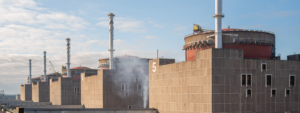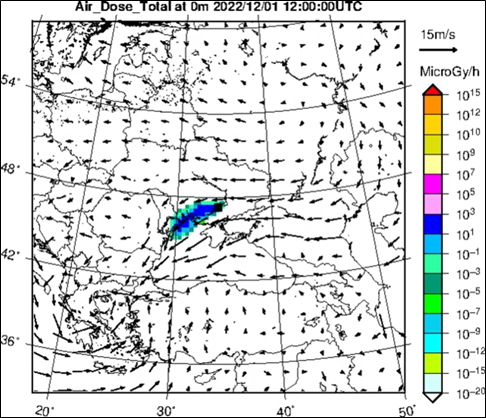
On February 24th, 2022, Russia started its military campaign to invade Ukraine. Ukraine is receiving military and financial aid from the West and some European nations, which is causing military setbacks to Russia. As a result, it may find ways to retaliate against Ukraine and its neighbors by sabotaging nuclear facilities in Ukraine. In fact, on March 12th, 2022, Russia occupied the Zaporizhzhia Nuclear Power Plant (NPP), and the Ukrainian NPP is currently being operated by the Russian state’s nuclear power company, Rosatom.1
According to Dr. Hamza El-Asaad, a researcher and Stanton Nuclear Security Fellow working in the Center for Nuclear Security Science and Policy Initiatives (NSSPI), “Such an attack on the NPP could range from a minor sabotage operation to a large-scale attack. A small attack or sabotage would probably be orchestrated to cause public panic in Ukraine and neighboring countries that support it, as opposed to causing harmful radiological consequences. On the other hand, another scenario could come in a form of large-scale sabotage causing large amounts of radioactive materials to be released from the spent nuclear fuel cooling pools inside the NPP.”
Dr. El-Asaad is currently working with NSSPI Director Dr. Sunil Chirayath to conduct a short and ongoing study in which he has postulated a hypothetical large-scale attack that Russia could conduct, resulting in a highly radioactive plume.
“This attack, although hypothetical,” said Dr. El-Asaad, “could be done on a day or days when weather and wind patterns are forecasted to move away from Russia and its ally Belarus. Russia, like many countries around the world, has its own meteorological services that can easily forecast weather 7 days ahead of time.”

He used a computer model called WSPEEDI to simulate radioactive materials dispersion in the environment.2 Figure 1 shows the plume starting in Zapporizhzhia NPP (square shape) and moving southwest towards Moldova and a small part of northeastern Romania. The plume dispersion is from 00:00 UTC to 12:00 UTC on December 1st, 2022, a 12-hour release with full core activity or a very large accident release of radioactive materials. In this scenario, the radioactive materials release is being pushed down to southwestern Europe by strong winds from the east. The wind vectors show that the plume would continue down toward Turkey and Greece. The wind vectors always show a whirlpool-like shape over these two countries causing the plume to linger over the two countries.
Dr. El-Asaad also specifically studied the dispersion of iodine and cesium, with six of their different isotopes based on a source term generated for a typical pressurized water reactor: 129I, 131I, 135I, 134Cs, 136Cs, and 137Cs. The radiation dose rates on the ground due to the plume dispersion and deposition ranged from 1 to 1000 micro-Gray per hour (µGy/h). The natural background radiation dose rate in Ukraine is approximately 0.4 µGy/h.3 The radioactivity content in the plume could potentially cause the radiation dose rate on the ground to increase by 10 to 10,000 times of the natural background radiation depending on the location.
From the results of this simulation using real-world meteorological data, Dr. El-Asaad concluded that the contamination from an attack on the Ukrainian NPP would affect southeastern Ukraine, parts of Moldova, Romania, Bulgaria, and possibly the North Atlantic Treaty Organization (NATO) countries of Turkey and Greece. Russia and neighboring ally Belarus would remain unexposed.
“The highly radioactive plume,” explained Dr. El-Asaad, “would likely cause public panic, health risks, and mass evacuations.”
Understanding the risks of potential sabotage to the Zaporizhzhia NPP can help local leaders better plan their emergency response. Being able to accurately anticipate the movement of the contamination can inform evacuation orders and even quell public fears of mass contamination.
References
- R. Petrenko, “Invaders seize Zaporizhzhia power plant and claims it is part of Rosatom,” Ukrayinska Pravda, 12 March 2022. [Online]. Available: https://www.pravda.com.ua/eng/news/2022/03/12/7330624/.
- Japan Atomic Energy Agency, “Quicker calculation of atmospheric dispersion of radioactive materials under various conditions —Calculation time reduced to 1/100 using newly-developed “WSPEEDI-DB”—,” 2020.
- A. V. Kutsak, “The Modern State of Problem of Providing Radio Protection of Ukraine’s Population from Natural Release Sources (review of literature),” National Library of Medicine, pp. 49-60, 2018.